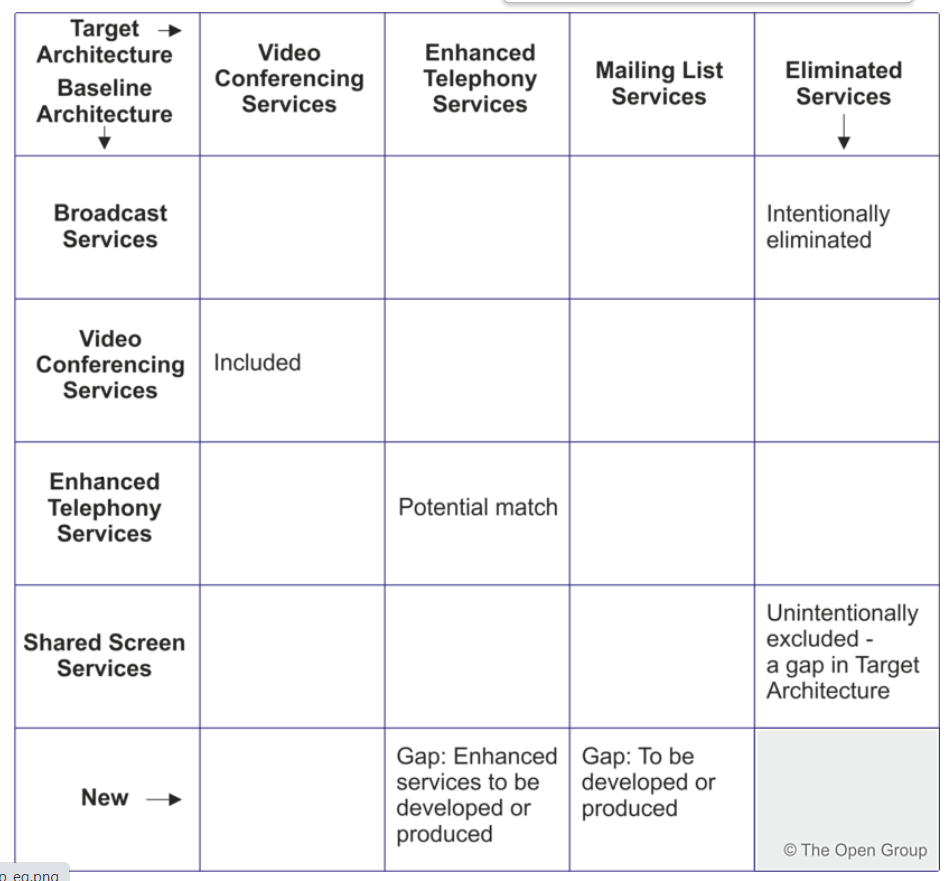TOGAF ADM: Top 10 techniques – Part 8: Validating GAP Analysis
Why Validating GAP Analysis For EA
Gap analysis is a commonly utilized technique across various industries and areas, particularly in enterprise architecture. This article assumes prior knowledge of gap analysis and does not aim to provide a comprehensive introduction to the concept, as ample resources are available in literature.
Instead, the focus is on a crucial aspect of validating an architecture – identifying any omissions. An architecture must effectively address all of the organization’s essential information processing needs. To achieve this, it is imperative to consider potential gaps that may have been overlooked. Stakeholder concerns that have not been addressed in prior architectural work are a critical source of such gaps. Therefore, it is essential to address them to ensure the architecture’s effectiveness.
How to Validating GAP Analysis
To conduct a gap analysis, it is suggested to follow the steps outlined below:
- Create a matrix with all the Architecture Building Blocks (ABBs) of the Baseline Architecture on the vertical axis and all the ABBs of the Target Architecture on the horizontal axis.
- Add a final row labeled “New” to the Baseline Architecture axis and a final column labeled “Eliminated Services” to the Target Architecture axis.
- If an ABB is present in both the Baseline and Target Architectures, mark it as “Included” at the intersecting cell.
- If an ABB from the Baseline Architecture is not present in the Target Architecture, review it. If it was intentionally eliminated, mark it as such in the appropriate “Eliminated” cell. If it was accidentally omitted, mark it as a gap to be addressed by reinstating the ABB in the next iteration of the architecture design.
- If an ABB from the Target Architecture is not found in the Baseline Architecture, mark it at the intersection with the “New” row as a gap. This gap needs to be filled by either developing or procuring the corresponding building block.
- Once the exercise is complete, anything marked under “Eliminated” or “New” is considered a gap. These gaps should be explained as correctly eliminated or marked to be addressed by reinstating or developing/procuring the corresponding function.
By following these steps, stakeholders can identify any gaps in the architecture and take appropriate action to address them. This iterative process is essential to ensure the architecture remains up-to-date and effective in meeting the organization’s information processing needs. Overall, conducting a gap analysis is an important part of validating an architecture and ensuring that it can support the organization’s essential information processing needs.

Summary
This article assumes prior knowledge of gap analysis and focuses on the crucial aspect of identifying any omissions while validating an architecture. To achieve this, it is imperative to consider potential gaps that may have been overlooked. Stakeholder concerns that have not been addressed in prior architectural work are a critical source of such gaps.
The suggested steps to conduct a gap analysis include creating a matrix with all the Architecture Building Blocks (ABBs) of the Baseline Architecture and Target Architecture and marking ABBs that are not present in the target architecture as gaps. The article emphasizes that anything marked under “Eliminated” or “New” is considered a gap, which should be explained as correctly eliminated or addressed by reinstating or developing/procuring the corresponding function.
The purpose of the suggested steps is to identify any gaps or omissions in an architecture design that could hinder its effectiveness in addressing the organization’s essential information processing needs. By creating a matrix with all the Architecture Building Blocks (ABBs) of the Baseline Architecture and Target Architecture and marking ABBs that are not present in the target architecture as gaps, the analysis can identify potential areas that require further attention or development to improve the architecture’s overall effectiveness. The steps aim to ensure that the architecture design is comprehensive and adequately addresses all the organization’s information processing needs to achieve its objectives.

